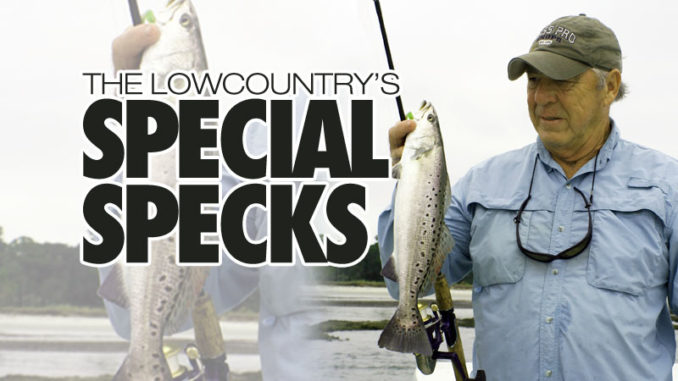
October begins several great months of trout action in the waters around Beaufort, S.C., as weather cools and fish move toward shallow water. Here’s how not to miss it.
Catching speckled trout, with their slashing strikes and pulsating runs, is thrilling any time of year, but now, it is actually easy. As the weather cools, specks move closer to shoreline grass and oyster banks during moving tides, both in and out, and feed throughout the day. Most-often schooling in 2 to 4 feet of water, they aggressively jump on a jig and plastic trailer cast toward grass banks and retrieved slowly, or a shrimp under a cork drifted a few feet from shore.
Owen Plair of Beaufort (S.C.) Fishing Charters, who guides light tackle and fly anglers for all the popular Lowcountry inshore fish, loves trout because of how aggressive they are in so many different situations.
“Many times you will see a trout eat a baitfish that’s almost half its size,” he said, “and rarely do they miss a prey with their big mouth full of sharp teeth.”
Autumn is absolutely the best time of the year for Lowcountry speckled trout, and while they sometimes venture into very shallow water and over oyster bars chasing bait, most often, they congregate in slightly deeper water. The period from October through early December features the best fishing of the year.
One of Plair’s favorite tactics for catching trout is to fish a live shrimp under a popping cork. He uses a Cajun Thunder cork above 18 to 24 inches of 20-pound fluorocarbon leader, with a small split shot crimped on the middle of the leader to hold the shrimp — impaled on a 2/0 circle hook — in the strike zone.
“Some people like to hook the live shrimp through its horn, but my favorite way is to hook it through the hardest area right above the tail so that it can still swim freely with lots of action from its legs,” said Plair, who likes to give the cork a slight pop about every 45 second so the sound, which resembles the popping sound shrimp make underwater, attracts fish.
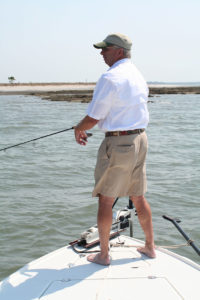
Trout have very large but delicate mouths, and he feels that the tension from the large cork helps hook a trout that hits the circle hook. When he fishes jigs, standard J-hooks or popular Kahle hooks, hooksets should be quick but smooth, not nearly as aggressive as you are when you hit a spot-tail bass, aka redfish.
Plair also targets trout with artificial lures, including soft-plastic baits on jigheads, hard-plastic lures and even topwater baits. One of the most-productive fall lures, Plair said, is a 3-inch Gulp! shrimp in new penny color, fished on a ¼- or 3/8-ounce jighead. Most times, a slow retrieve works best. Plair blind-casts to grass edges and creek mouths to find fish, and when he gets a bite, most of the time, more fish are in the same area.
When the water temperature drops and trout school in slightly deeper water, Plair likes to search for trout by trolling a couple of soft-plastic paddletails on 3/8-ounce jigheads. When a fish is hooked, turn around and fish the area again.
Trout often hang out along the edge of structure. Whether it’s a big oyster bed a few feet under the water, a fallen tree or even dock pilings, trout like structure because that’s where the bait is. Moving water is important, too, so try to work live bait or artificial lures with the current flow along the edge of these areas to create a more realistic presentation.
Topwater action for those who love casting plugs is best early in the morning before the sun gets too high or when it’s overcast and cloudy. Walking the dog with classic topwater plugs, like black/chartreuse or red/white Zara Spooks works great. Remember, when fishing topwater lures, keep the bait moving even if a fish strikes and misses, since most times, a trout will come back and strike again.
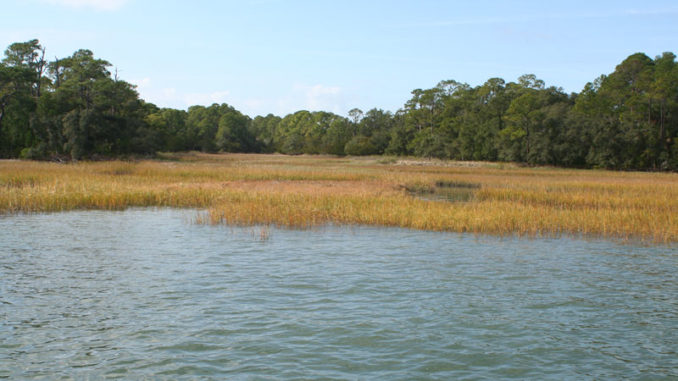
Other places trout hang out are around boat docks, in deeper holes in creeks, in depressions in the middle of creeks and at times, just outside of redfish flats where the bottom drops off. Cast also near oysters on points, stand-alone oyster bars with current, uptide and downtide sides of creek mouths and grass-line edges, especially where oysters break the current flow.
If you want to find your own “trout drops,” do some low-tide research along shorelines. Motor slowly along at low tide and make a mental note — or even enter GPS waypoints — of oyster shell outcroppings. These will be the likely holding spots for trout when the water covers them. Then, return with the rising tide and float a cork over the shells with the bait almost touching the bottom.
According to Joey Ballenger, a marine scientist with the S.C. Department of Natural Resources, the 2018 winter freeze did some damage to trout stocks, but last summer’s voluntary catch-and-release program worked well, and the spawn was excellent. Stocks of just-legal sized fish should be plentiful, and larger fish will still be around. Go out and catch them and keep a few if you enjoy eating good fish but release the rest to fight again.
Productive spots include shorelines, landings
For most of the year, catching a trout from the shore, a public pier or boat landing where fishing is permitted is challenging, to say the least. But in October through December, it can be different.
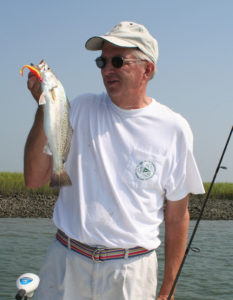
In fact, some shoreline spots hold schools of legal-sized trout within easy casting range, including one near Sam’s Point Landing. The Broad River Bridge fishing pier and the shoreline on the south side of the bridge are also productive, along with the area around the Chechessee River Landing. Remember, when you fish around public boat ramps, boats being launched have priority.
For anglers with boats in the Port Royal Sound area, the area south of the Chechessee Bridge, the northern shorelines of Rose and Daws Island and farther south in the Colleton River are good spots. In the Broad River, the shoreline from Boyd Creek down past Hazzard Creek has expansive flats with numerous oyster out-croppings that can be great. Farther up the Broad are some shell banks by Clarendon Plantation and around Corn Island and Habersham Point flats. Downriver from the Broad River Bridge are various creek mouths along the south shoreline and the Blue Coat edge above Archers Creek.
In the St. Helena Sound area, a shoreline just to the left of Eddings Point Landing is a good trout spot.. Also, check out the Morgan River shoreline across from the Dataw Island Marina. In the Sam’s Point Landing area, try the mouth of Fish Creek across the Coosaw River. From Station Creek Landing on St. Helena Island, good flats are on either side of where the Story River meets Trenchards Inlet.
DESTINATION INFORMATION
WHERE TO GO/HOW TO GET THERE — The waters around Beaufort are teeming with fish as fall arrives. South of the Broad River, anglers have good access at the Chechessee River and Broad River landings, both on SC 170. Beaufort anglers have easy access from the landing on Lady’s Island and on Sam’s Point Road. Eddings Point Landing on St. Helena Island and Station Creek Landing are also good.
WHEN TO GO — Trout are very active for the next couple of months. The top half of the tide, either rising or falling, is often considered most productive. Trout bag limits this year are 10 fish daily with a 14-inch size minimum.
BEST TECHNIQUES — Fish live shrimp under a popping cork, soft plastics on a jighead or topwater baits close to marsh grass. Troll soft-plastic paddletails in slightly deeper water when searching for fish. Moving water is a key.
FISHING INFO/GUIDES — Capt. Owen Plair, 843-812-3656, www.beaufortscfishingcharters.com; Captain Tuck Scott, 843-271-5406; Capt. Shannon O’Quinn, 843-368-1558; Capt Dan Rourke, 843-263-3863; Bay Street Outfitters, Beaufort, 843-524-5250; Grayco Hardware, Lady’s Island, 843-521-8060; Boat and Dock Supply, Port Royal, 843-986-0552. See also Guides & Charters in Classifieds.
ACCOMMODATIONS — Beaufort Area Chamber of Commerce, 843-986-5400, www.beaufortsc.org.
MAPS — Top Spot waterproof map No. N233, available from most local tackle shops.

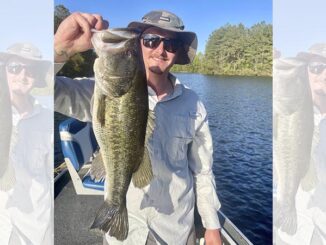
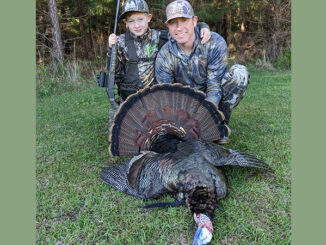

Be the first to comment